As staff shield Feinstein from the press, a picture really is worth a thousand words
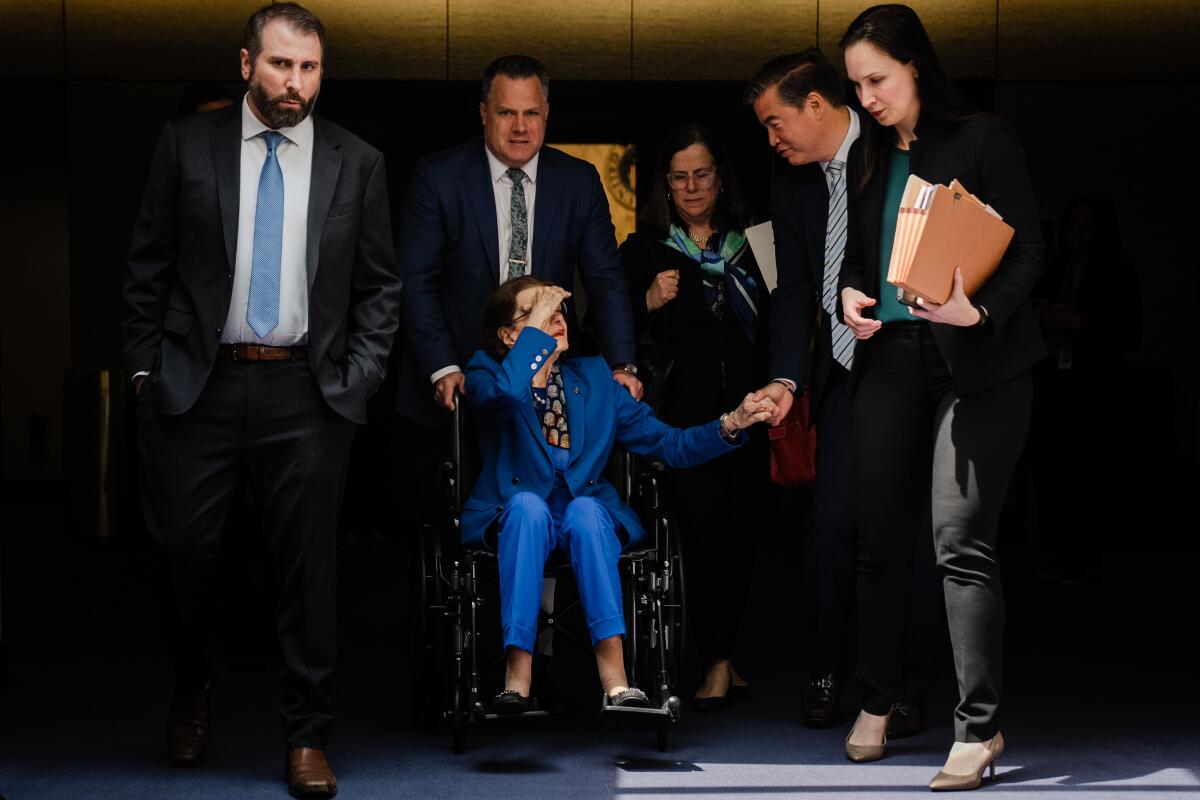
- Share via
Good morning, and welcome to the Essential California newsletter. It’s Wednesday, May 24. I’m Kent Nishimura, a staff photographer for the Los Angeles Times based out of Washington. I cover politics and national news.
The exercise of photographing a U.S. senator is a bit like a game of cat and mouse.
The photographers and reporters of the Capitol Hill press corps patiently mill about in case a person, most likely in a blue suit (or sometimes a hoodie) with a phalanx of staff, breezes by. That’s when we strike.
In these brief moments, we create the postcards of history.
Sign up for Essential California
The most important California stories and recommendations in your inbox every morning.
You may occasionally receive promotional content from the Los Angeles Times.
But the Capitol complex is a maze — full of hideaways, tunnels, subways, staircases and doors opening into rooms that spill into an unfamiliar hallway. When members of Congress want to avoid reporters and photographers, they have a number of options.
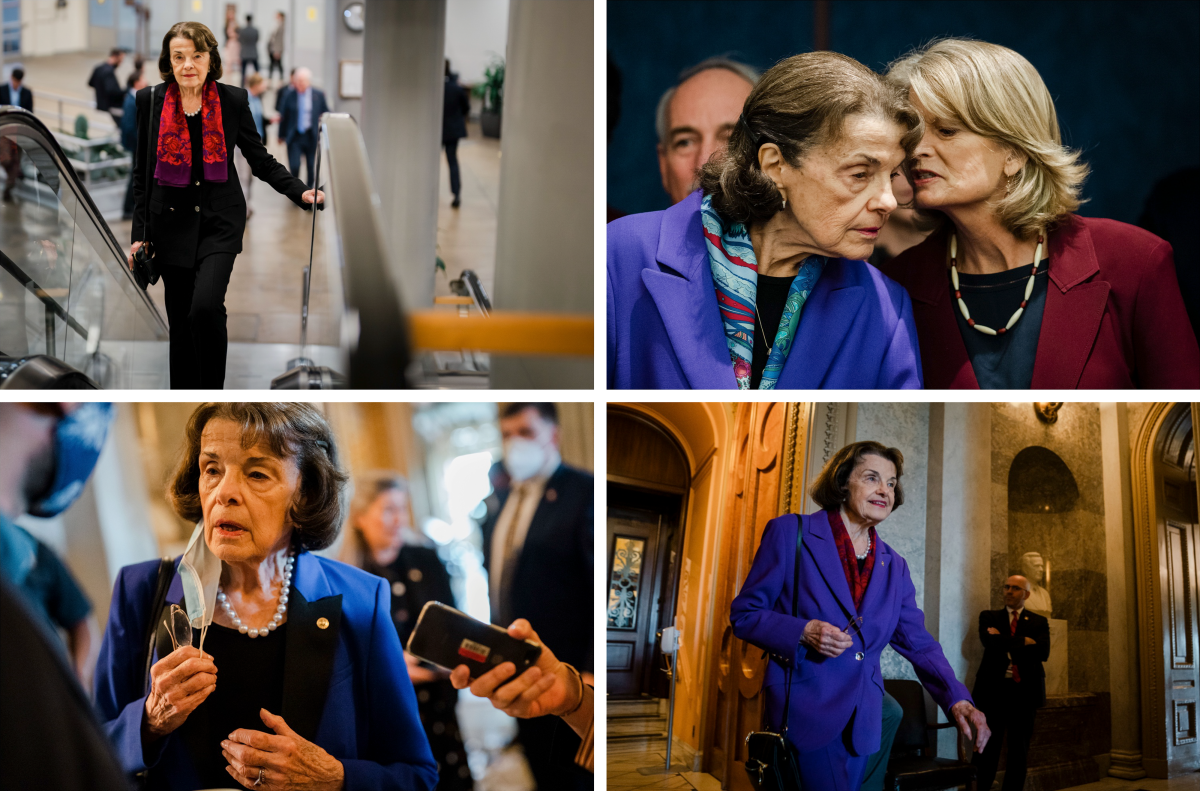
Since her recent return, Sen. Dianne Feinstein (D-Calif.) and her staff have used every trick in the book to stay out of sight and at a distance from the press.
The 89-year-old had perhaps the most famous case of shingles in America and, as we reported last week, the complications she experienced included encephalitis, a swelling of the brain that can be debilitating and cause memory loss, among other effects.
Her illness made confirming judges more challenging. Though Feinstein’s return meant Senate Democrats could reclaim their one-seat margin on the Senate Judiciary Committee, questions continue to swirl around her capacity to serve the Golden State’s 39 million residents.
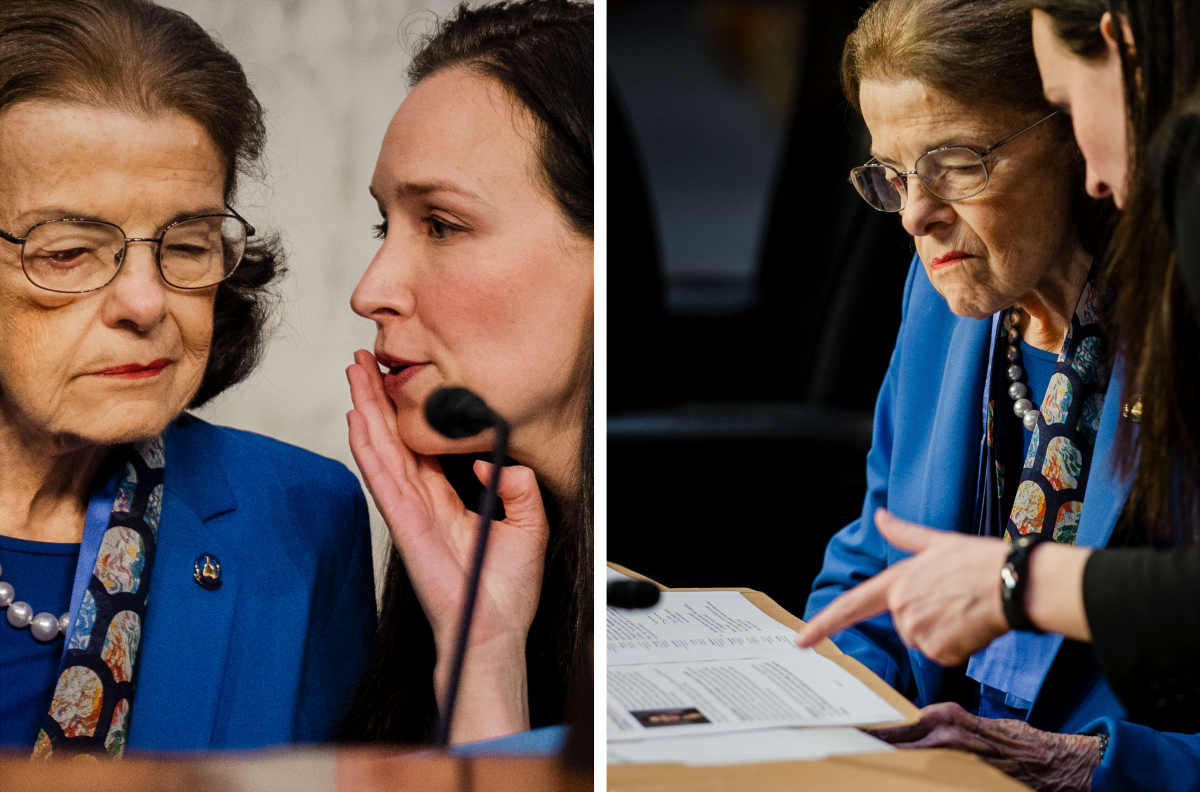
In committee meetings, her public remarks have been limited and she is always surrounded by staff. They also often form a human barrier between her and the press corps, with one staffer pushing her wheelchair while others shout at photographers to move out of the way.
One member of this protective bubble is Nancy Corinne Prowda, Rep. Nancy Pelosi’s eldest daughter, who was first observed by the San Francisco Chronicle’s Shira Stein. Since Feinstein returned to Washington, I’ve found myself regularly watching as Prowda runs interference and shields the senator from reporters, sometimes placing herself between them.
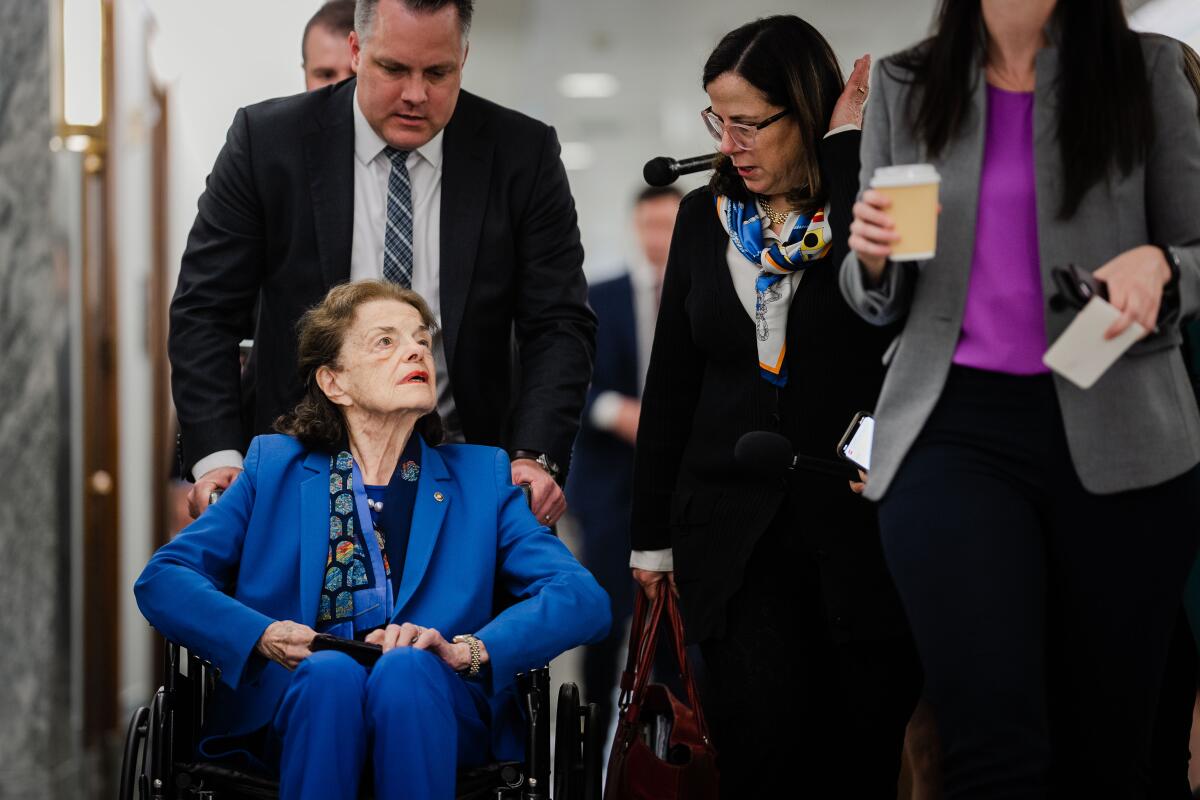
This drive to protect the senator isn’t entirely new. Rolling Stone reported that in recent years, Feinstein’s office has implemented a system to prevent the senator from ever walking around the Capitol on her own.
It didn’t always work.
Once, in 2021, I came across Feinstein leaving a hearing alone. I briefly chatted with her, asking her how she was doing.
“You again,” she said to me with a smile.
She stopped in the hallway and looked in each direction. She walked down the hall, paused, turned around and went in the opposite direction. A staffer soon ran out of the committee room and down the hall after the senator.
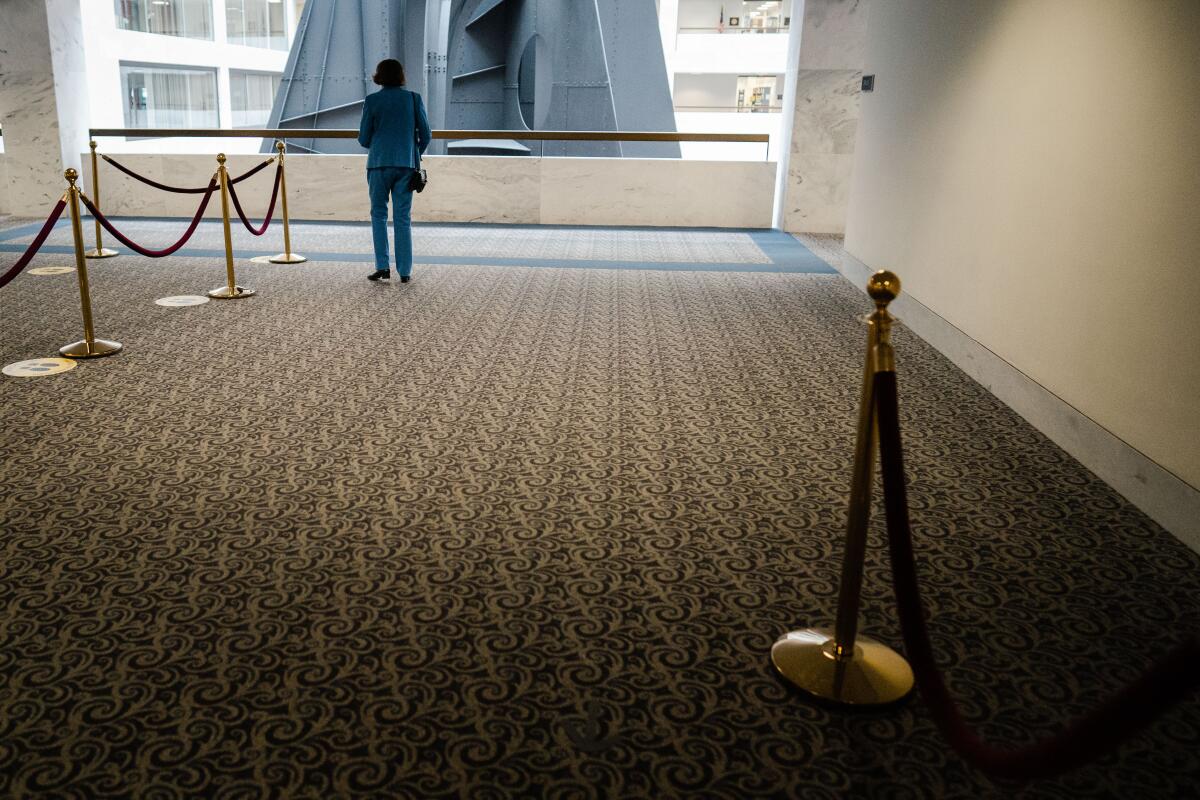
Her staff’s efforts to protect the former San Francisco mayor from scrutiny have intensified since her return, and ratcheted up further after my colleague Benjamin Oreskes caught up with Feinstein on her way back from a vote. During that conversation, she appeared to not recall she’d been absent from Congress for months due to her illness.
These days, the senator is escorted on paths to and from the Senate chamber, where cameras aren’t allowed. Politico reported that her office requested that the Capitol Hill security apparatus keep the press as far from her as possible.
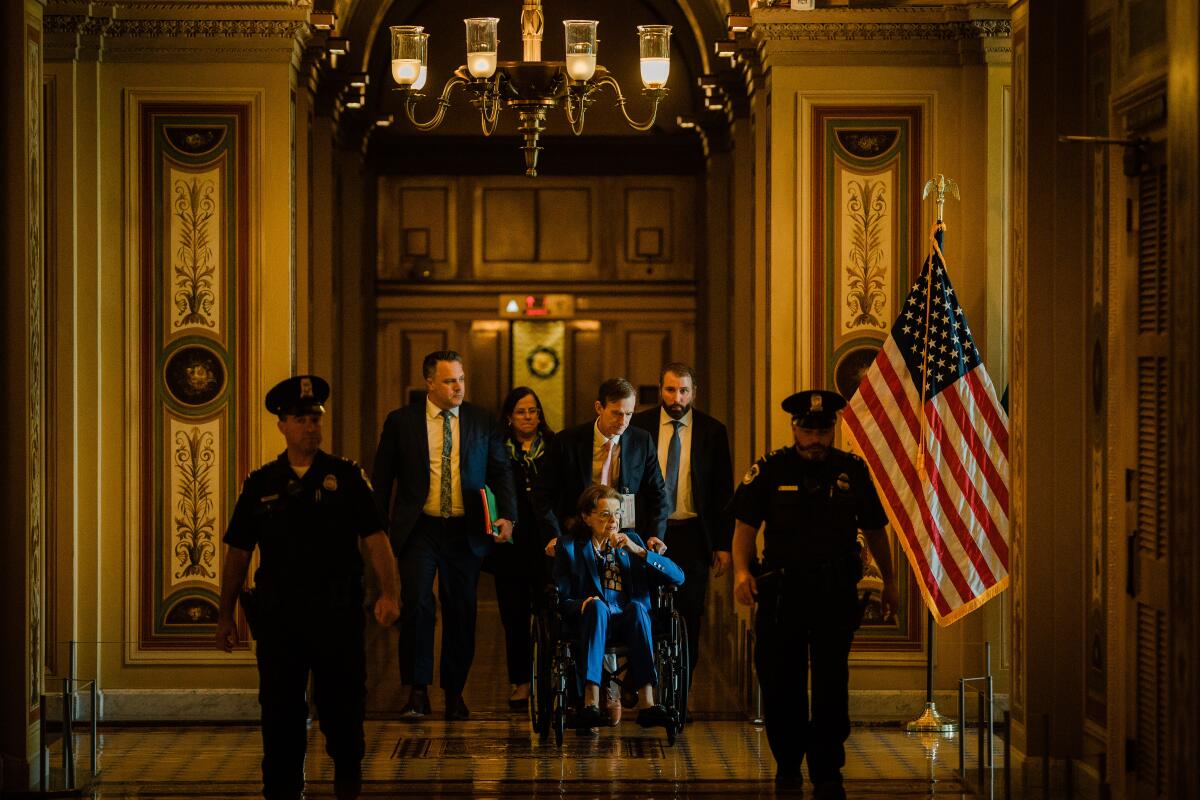
For two days in a row last week, the Senate sergeant-at-arms office has said her arrival at the Capitol “is closed press,” shutting doors and using the Capitol police to chase journalists out of hallways and public spaces. This unprecedented act of restricting press freedom only raises more questions.
I photographed the senator as a staff member tried to hide her wheelchair behind a pillar at a low-profile exit last week. A Capitol Police officer shouted at me to move back — despite already being 30 feet away from the senator. Feinstein waved as she was escorted to a waiting vehicle.
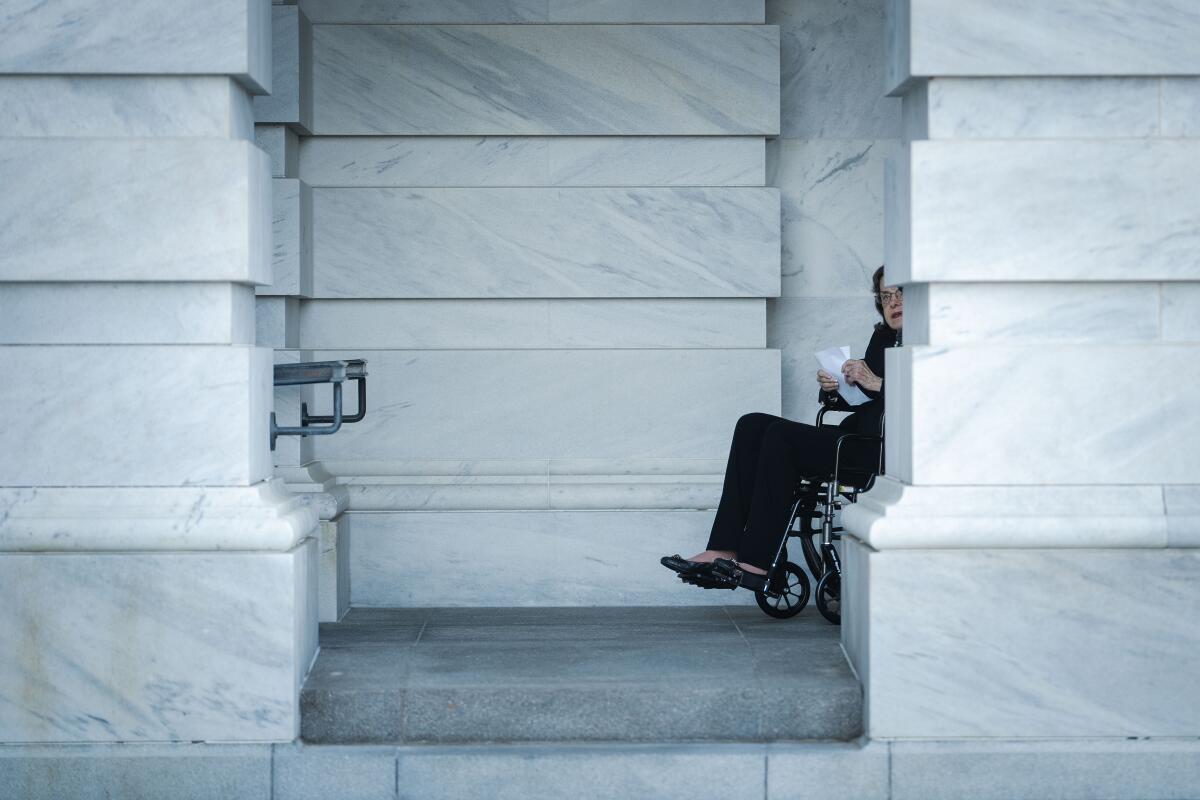
The following day, May 18, the senator arrived at the same entrance for a vote on the floor of the Senate.
The Senate sergeant-at-arms’ office told members of the press they couldn’t document it. We were standing on a patch of grass on the Capitol Plaza that is open to the public. Feinstein declined to answer any questions.

Feinstein’s office denied that it was intentionally hiding her from the press.
“Our office has not asked photographers to not take pictures of her in her wheelchair,” Feinstein spokesman Adam Russell said in a statement to The Times. “We did ask, and continue to ask for safety reasons, that photographers and reporters give her space, particularly when entering and exiting her vehicle.”
As Feinstein continues the light schedule her office says is recommended by her doctor, the press has been respectfully but dutifully seeking out information and insights that can shed light on her ability to do her job. Letting the public see her through photos is a big part of that.
Therein lies the importance of what journalists who report on our nation’s capital do: We mind the business of the people whose decisions change reality on the ground.
And now, here’s what’s happening across California:
Note: Some of the sites we link to may limit the number of stories you can access without subscribing.
L.A. STORIES
Two years behind schedule and $335 million over budget, L.A. Metro’s Regional Connector finally has an opening date: June 16. The two-mile line is designed to reduce transfers in the downtown L.A. core, allowing riders to sit back and relax for single-line trips between East L.A. and Santa Monica as well as Azusa and Long Beach. Los Angeles Times
It’s been a remarkable several years for the once-tumultuous Pasadena Playhouse, which is set to receive the 2023 Regional Theatre Tony Award in June. The honor marks only the second time a theater in L.A. County has won the award. Los Angeles Times
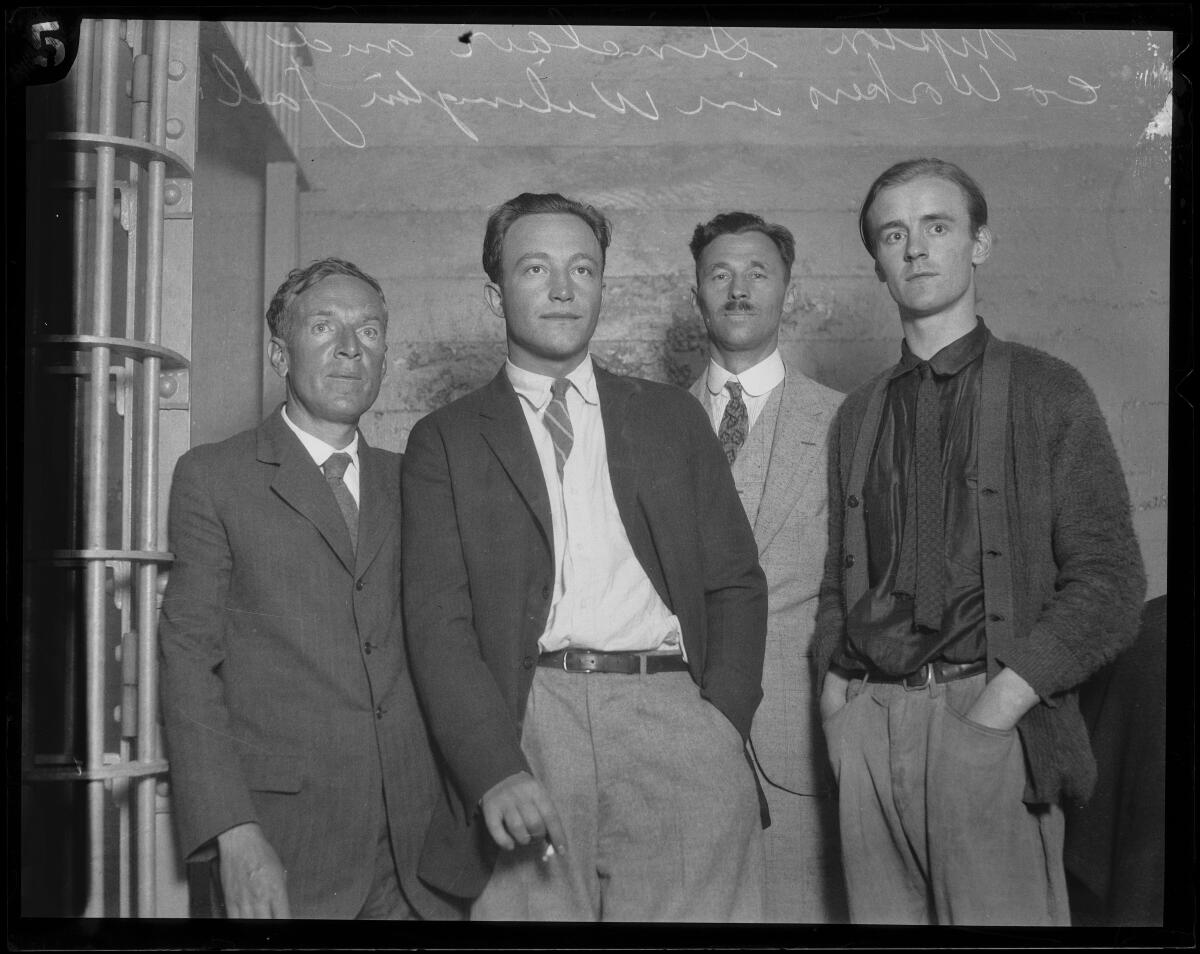
Just how anti-union was L.A. back in the day? Patt Morrison details the arrests of Upton Sinclair and some of his associates 100 years ago, who LAPD officers cuffed as they tried to read from the U.S. Constitution and other founding documents amid a labor strike. Los Angeles Times
CRIME, COURTS AND POLICING
Earlier this month, the L.A. County watchdog investigating Sheriff’s Department gangs demanded that dozens of deputies reveal their tattoos of affiliation. The deputies’ union has now sued the county, alleging the demand is unconstitutional and violated labor laws. Los Angeles Times
L.A. County’s juvenile halls are “unsuitable” to house youths, state regulators decided in a unanimous, unprecedented vote. County officials have been allowed two months to move roughly 280 youths out of those facilities. Los Angeles Times
The Los Angeles Police Department will be adding a dog-like robot to the force. The City Council approved the donation Tuesday after postponing a vote back in March. A majority approved accepting the robot despite concerns from community members that the technology would be used to spy on Black and brown Angelenos. Los Angeles Times
Support our journalism
HEALTH AND THE ENVIRONMENT
If you were hoping our wet, cold winter would be followed by a subdued summer, forecasters have some bad news. Predictions from the National Oceanic and Atmospheric Administration show above-average temperatures for California and across the West. Los Angeles Times

In the meantime, a cooler spring has been good news for residents in the Tulare Lake Basin. Concerns about epic snowmelt bringing catastrophic flooding have mostly subsided, based on state officials’ latest modeling. Los Angeles Times
A large snapping turtle was spotted swimming in a Santa Rosa lake. It’s unclear how the non-native reptile, known for chomping, ended up in Lake Ralphine, but the California Department of Fish and Wildlife is investigating. SF Gate
Free online games
Get our free daily crossword puzzle, sudoku, word search and arcade games in our new game center at latimes.com/games.
AND FINALLY
Today’s California landmark is from Michelle Horeczko of Los Angeles: the Korean Bell of Friendship in Angels Gate Park.
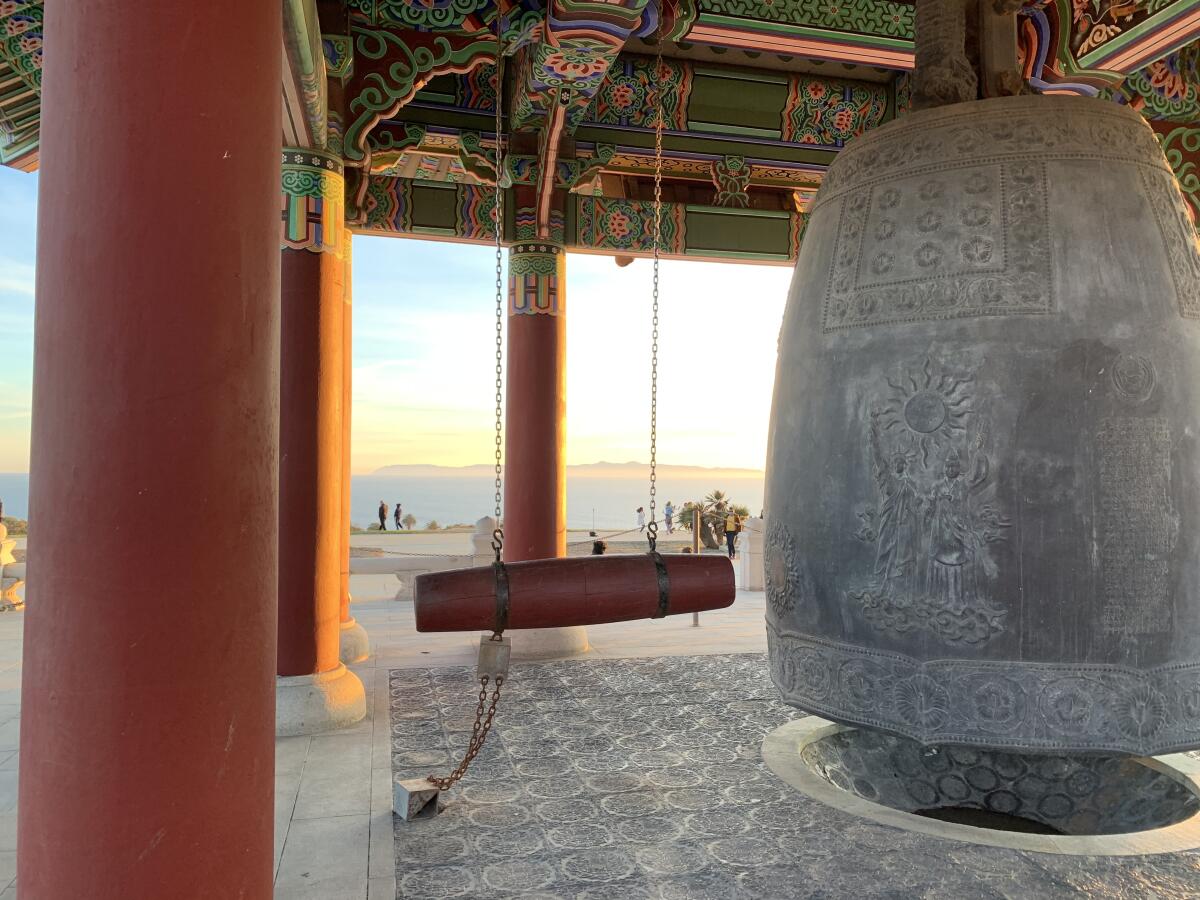
Michelle writes:
[It was] gifted to the U.S. by South Korea for the centennial. The bell features a relief of the Statue of Liberty and the Korean Liberty goddess. It’s located on a bluff above the ocean where people often come for kite flying, picnics, basketball and views of Catalina Island.
What are California’s essential landmarks? Fill out this form to send us your photos of a special spot in California — natural or human-made. Tell us why it’s interesting and what makes it a symbol of life in the Golden State. Please be sure to include only photos taken directly by you. Your submission could be featured in a future edition of the newsletter.
Please let us know what we can do to make this newsletter more useful to you. Send comments to essentialcalifornia@latimes.com.
Sign up for Essential California
The most important California stories and recommendations in your inbox every morning.
You may occasionally receive promotional content from the Los Angeles Times.







